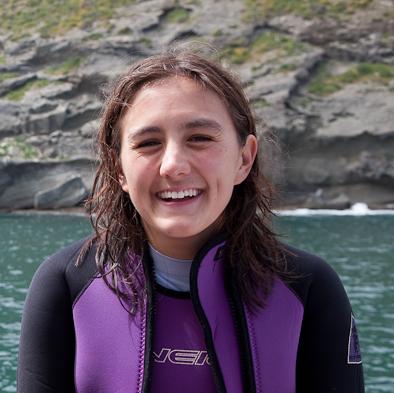May 2, 2016
Snorkeling for beginners in Anilao
By MARGOT STILES
(NOTE: The author is Oceana’s director for science and strategy. In August 2015, she was a guest speaker at a fisheries reporting training for community journalists from Luzon, the largest island in the Philippines. She wrote this blog post after teaching some of the trainees to snorkel for the first time in the waters of Anilao, a popular diving destination.)

A trail of ashes obscures the glory of old Manila in more ways than one, as our views of the Philippines are tainted by a murky cloud over the country’s first point of entry. In my hotel, a fellow business traveler looks up in keen interest when I say that I am a marine biologist. His first words are always the same as those of others I have met on my travels: “Is diving good in the Philippines?” Or the confession, “I always wanted to be a marine biologist.”
At this moment, I can’t believe he’s passed over one of the most accessible joys of marine biology. Within two hours of Manila’s downtown business district, anyone can wade into the shallows of the bustling global capital of coral reef biodiversity. While you’re not likely to put your name to a new species, it is easy to fall in love in these first joyful breaths. You don’t even have to know how to swim.
“Is the diving good here?” This time, the question comes from a journalist visiting from the Cordillera, yet again her ocean inheritance remains unexplored. I blame the word “biodiversity,” a term as clinical as “extended family” for downplaying a similarly dramatic characteristic of the Philippines. On Caribbean dives I might see a sea urchin or a lapu-lapu, and on a good day, a single nurse shark. On a Philippines dive, dozens of relatives of sea urchin, many flavors of reef fish, and many shapes of shark await the explorer. It’s as striking as the difference between a two-child American family and the dozen faces crowding a Filipino home. Thankfully, today I don’t have to explain because we are not trapped in a Makati hotel. We are in Anilao, Batangas.
The pounding waves suddenly look less friendly as snorkels are handed out, and I wonder if there’s even a reef here, so close to runoff from the street. “I’ll just check the conditions,” the guide says as he swims swiftly away from the impact zone, where crashing waves cloud our entry. Several lifejacket-wearing mountain dwellers stand stiffly, eyeing the murky water with trepidation. “Walk sideways and bend your knees like a basketball player,” I suggest, beckoning towards the sea. I explain how to keep hair from your mask, where to put your nose and how to bite the snorkel to get a good seal, allowing you to breathe freely. Then I instruct each person to plunge their face in and look at their feet.
Squeals of delight travel quickly. Even if there’s no biodiversity other than our toes, “in the beginner’s mind there are many possibilities,” and Shunryu Suzuki’s words apply. I’ve never had more fun with fewer fish than in the company of beginner snorkelers from northern Luzon.
Eventually, the boldest is willing to swim beyond the first meter. Eagerly, she follows a sunny striped fish offshore to a deeper enjoyment of the Philippines’ original glory, unclouded at last.
